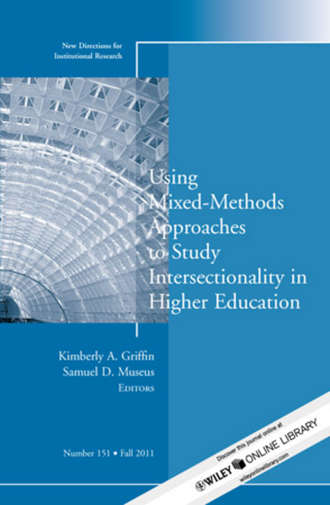
Полная версия
Using Mixed Methods to Study Intersectionality in Higher Education. New Directions in Institutional Research, Number 151
This volume offers institutional researchers several examples of the ways in which quantitative and qualitative methods can be integrated for a better grasp of how members of our educational communities understand and experience their environments on the basis of their multiple identities. The first two chapters provide context for the volume's theme with definitions and overview of the underpinnings of mixted methodology. Subsequent chapters illustrate the multiple ways in which qualitative and quantitative methods can be integrated to understand the complexity of identity and experiences of marginalized groups in the academy. Other chapters focus on students' experiences and demonstrate how mixed-methodology approaches were used to explore college access among first-generation Asian Americans and Pacific Islanders analyze racial ideology of white males with interview data driving analysis of longitudinal dataset and research and accessment generating accurate understanding how of race and gender shape students' experiences within the campus The final chapter presents findings of a mixed-methods inquiry to challenge current conceptions about racial categorization and practices for gathering institutional data on students' identity. Volume editors Kimberly A Griffin, assistant professor of education policy studies at the Pennsylvania State University, and Samuel D. Museus, assistant professor of educational administration at University of Hawai?i Manoa, and contributing authors advocate for intersectionality research and argue that it holds great promise for advancing knowledge in higher education. Their book is ideal for institutions and institutional researchers who want to understand and most effectively serve their students and faculty. This is the 151st volume of the Jossey-Bass quarterly report series New Directions for Institutional Research. Always timely and comprehensive, New Directions for Institutional Research provides planners and administrators in all types of academic institutions with guidelines in such areas as resource coordination, information analysis, program evaluation, and institutional management.


